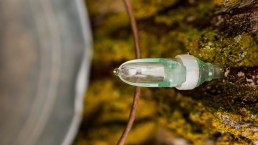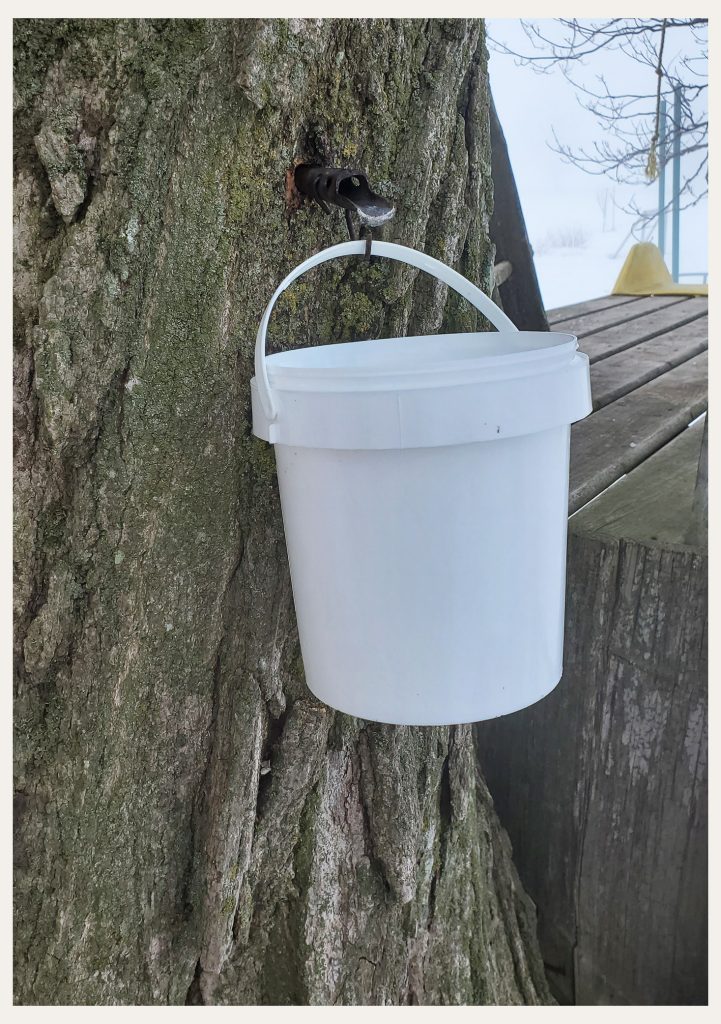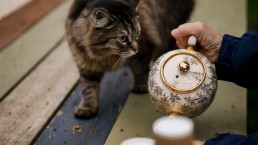Rising of The Sap
Tapping a Sugar Maple with Kids!
While towards the end of winter, it often seems like the cold days are never going to end, there is always this one special activity to look forward to…
One late winter day, one of my sons asked me to ‘tap’ our Maple tree – he wanted to taste the sap. Quickly he remembered that back in the bush, in the abandoned shack, there were dozens of old maple spouts. What can I say; while I use maple syrup in my kitchen weekly, never have I enjoyed the sap straight from the tree.
Finding the Right Tree
Many maple species can be tapped for their sap, but we were out to find the sweetest of the all; the sugar Maple. With our tree bud ID, we quickly set out to find one. It did not take long for the kids to forget about me, running around in the bush, finding several sugar maples on their own. Equipped with a drill, spout and small pail, we started the adventure of tapping our first tree.
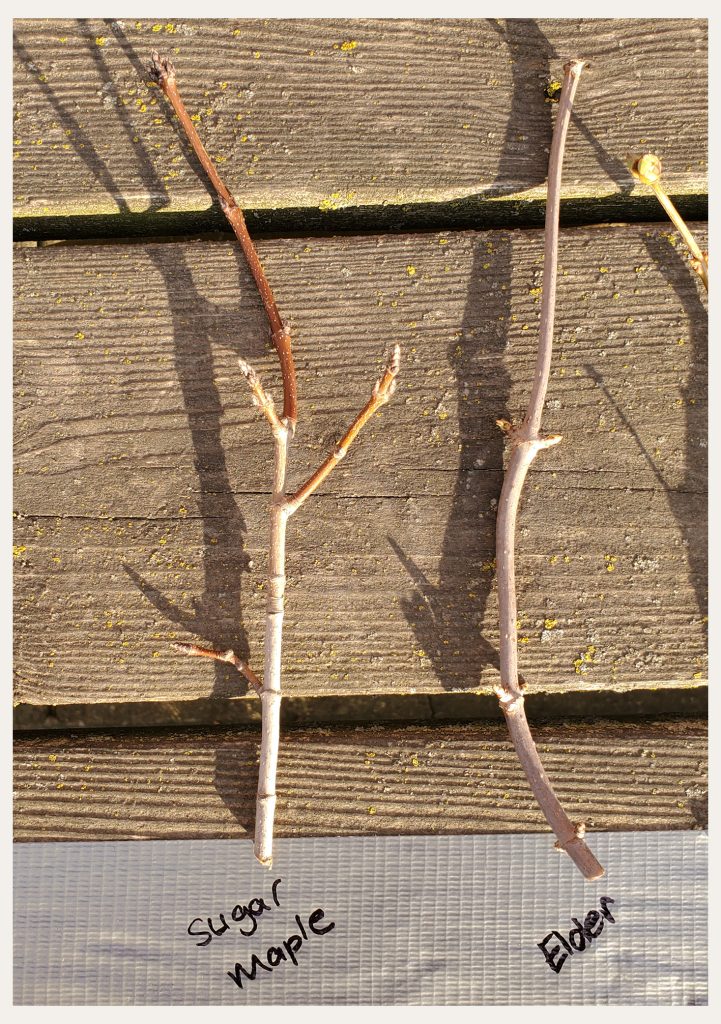
You should have seen the joy and amazement in their eyes, as the sap started dripping immediately. Little mouths, wide open right under the spout. Drip, drip, drip. Oh how sweet Maple’s water tasted!*
Close to lunch time we decided to hang the pail and collect the sap. By the time we returned, which was around 3 hours later, our little pail was overflowing! This got us even more curious. How about we collect 2 days worth of sap, and boil it down to make our very own maple syrup – just enough for one pancake breakfast…
Learning Together
One just has to love the innate curiosity kids bring with themselves. This easy and simple activity of identifying a sugar Maple, tapping it, tasting the sap and boiling it down to make syrup, just enough to enjoy it for one special breakfast, filled our weekend with joy, harmony and countless memories made. Not only have my children now experienced the taste of fresh Maple sap, but on a very small scale, they now know the basic process of how to make syrup in our own back yard, with next to no professional equipment, but only what we found in the kitchen. That weekend, we left the car in the garage and appreciated the gifts Mother Nature has offered us. We had each other, surrounded by crisp winter air, the warming rays of father sun and fresh, sweet Maple sap. An activity guided by the sun and the wheel of the year.
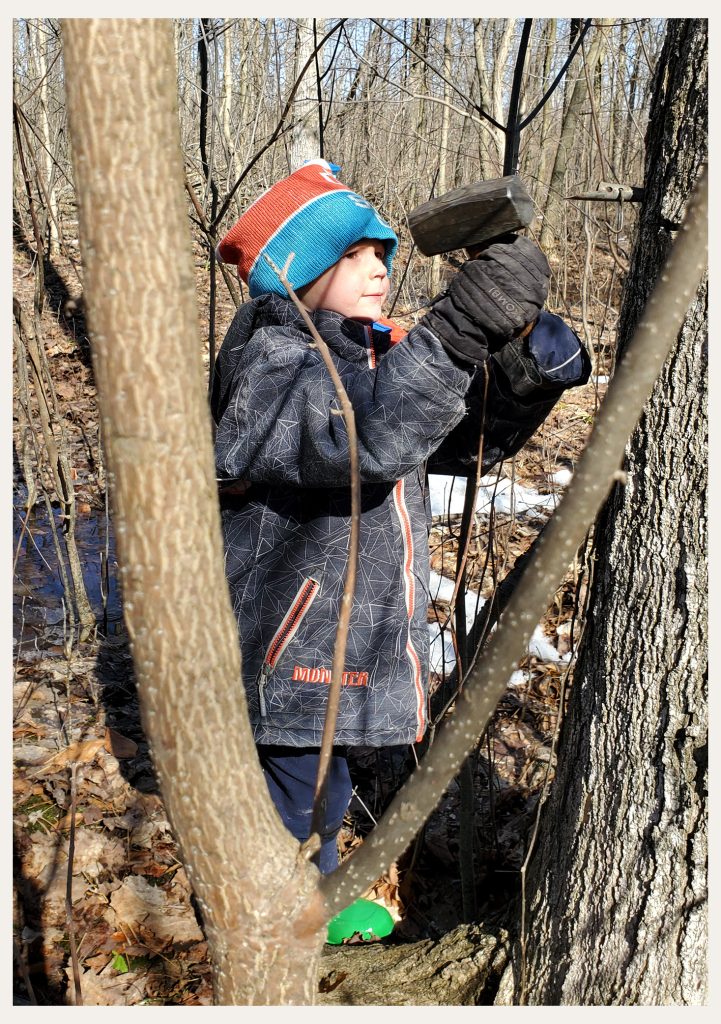
Following the wheel of the year is what brought us as a family closer to nature as well as closer to us, ourselves. While times can be busy and many of families are feeling a ‘disconnect’, it really does not take a lot to find your way back to the natural world and the myriad of gifts that are offered to us.
Reconnect to Mother Nature!
With all that being said, let us help you reconnect with Mother Nature!
At The Lion’s Tooth, we have designed a program to help busy families who feel disconnected from nature and their ancestry. Through 12 digital and in print magazines, with easy and accessible lessons and activities, families can re-connect with nature and learn to use plants like their ancestors did.
It’s time to find your way back to Mother Earth and live by the cycle of the sun. Connect to the wheel of the year and learn foundational knowledge about common wild plants and their many uses.
To learn more and to sign up, visit us at thelionstooth.ca
You can also connect with us on Instagram and Facebook @thelionstooth.ca
*while maple sap has several amazing health benefits, please be aware of the advised cautions when consuming it raw. Please research before drinking.
Featured header photo provided by Serena Mor, and blog photos provided by Evelyn
Tinctures
Adults
General adult tincture dosage: 15 – 30 drops / 3x daily
or
Dosage of a tincture for a chronic problem is ¼ teaspoon 3x daily.
Dosage for acute situations is ⅛ – ¼ teaspoon every half hour to an hour.
Children
Tinctures (vinegar base):
Young’s Rule = ¼ of adult dosage
Cowling’s Rule = ⅙ of adult dosage
Teas
General guideline:
If an adult dose is 1 cup of tea:
Children 1 year or less = 2 teaspoons
Children 2 – 4 years = 3 teaspoons
Children 4 – 7 years = 1 tablespoon
Children 7 – 11 years = 2 tablespoons
or
Tea is usually given in a dose of 1 – 2 eye droppers full to ¼ cup to children under one year, ¼ – 1 cup every few hours to toddlers and older children. For children over 1, teas can be sweetened with honey or maple syrup. Honey is excellent for treating coughs, too! (Do NOT give honey to babies under 2 years old – it can cause infant botulism).
February 14, 2021

